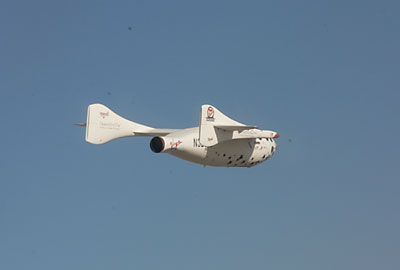Space tourism meets ITARby Taylor Dinerman
|
| The export of suborbital vehicles or their subsystems will inevitably involve a difficult and expensive process in order to comply with these laws. |
In theory, these craft are about as dangerous as an ordinary executive jet, which, after all, could be transformed into a military reconnaissance aircraft or even a bomber. However, since their performance is so much greater and since the technology is not well understood by the regulators at the State Department, any attempt to take one of these craft out of the country will probably involve some difficult negotiations and, probably, some policy decisions that the government will not find easy.
Let us suppose that Burt Rutan wants to take an operational version of SpaceShipOne to next year’s Paris Air Show. Scaled Composites would need to get an export license but, even before they could do that, they would need to register and begin to track all their proprietary company information, even if it were not classified.
Even worse are the difficulties in dealing with non-US companies, and other possible problems if they have non-US citizens on their payroll. Fulfilling the legal obligations of ITAR, for a small company such as Scaled Composites or XCOR Aerospace, are almost impossible. To some extent, this is by design. Too often in the past vital military technology has been lost overseas because a small or medium-sized company was unable to realize what it was doing. Big companies, of course, have had their own problems with ITAR, but no one believes that Boeing or Lockmart are going to go out of business because they have trouble complying with the regulations.
The FAA’s Office of Commercial Space Transportation (AST), the Commerce Department, the State Department, and the Department of Defense should consider setting up a coordinating body to deal with these issues before they become a threat to the delicate health of the infant suborbital space tourism industry. If, as seems quiet possible, the Commercial Space Transportation Amendments Act is dead for this year, next year’s version can be modified to include a simplified set of regulations covering, at least, the temporary export of space tourism vehicles.
| The US government now has to reconcile two important national security imperatives: the need to nurture the infant suborbital industry and the need to insure that this technology does not fall too easily into hostile hands. |
It may also turn out that these vehicles are covered by the Missile Technology Control Regime (MTCR). This was originally intended to keep Scud-type rockets out of the hands of people like Saddam and Kim Jong Il. We can all see how successful it’s been at that job. It has, however, complicated other efforts. For example, the export of the Israeli/American Arrow II anti-missile missile from Israel to the US for testing was almost prohibited by those in the US government whose job it is to protect the MTCR. The US has also found itself trying to stop India from buying Russian cryogenic rocket engines for its GSLV launch vehicle.
The MTCR could very well apply to SpaceShipOne’s successors, for the simple reason that they will have to have far better flight controls than the vehicle that won the X Prize. They could conceivably be modified into air-launched ballistic missiles, similar to the ill fated Blue Streak of the early 1960s. A few years from now, one rich man’s suborbital space yacht could easily be turned into another man’s long-range ballistic missile. Considering that Rutan’s craft and the White Knight carrier plane were apparently designed and built for about 25 million dollars—the fly away price of an F-16 or a Gulfstream executive jet—it is not inconceivable that a rogue state may try to procure such a system for less-than-peaceful goals.
The US government now has to reconcile two important national security imperatives: the need to nurture the infant suborbital industry and the need to insure that this technology does not fall too easily into hostile hands. Governments are traditionally far better at killing off infant industries than at nurturing them. Over the last decade, the US government has done a pretty good job of mostly leaving the entrepreneurs alone to pursue their efforts. Now that the industry is at a crucial fork in the road, the government should look very carefully at what steps it takes in dealing with these companies. The US desperately needs the benefits that come from the efforts of these adventurous spirits. A reinvigorated aerospace industry should be the overriding priority.
